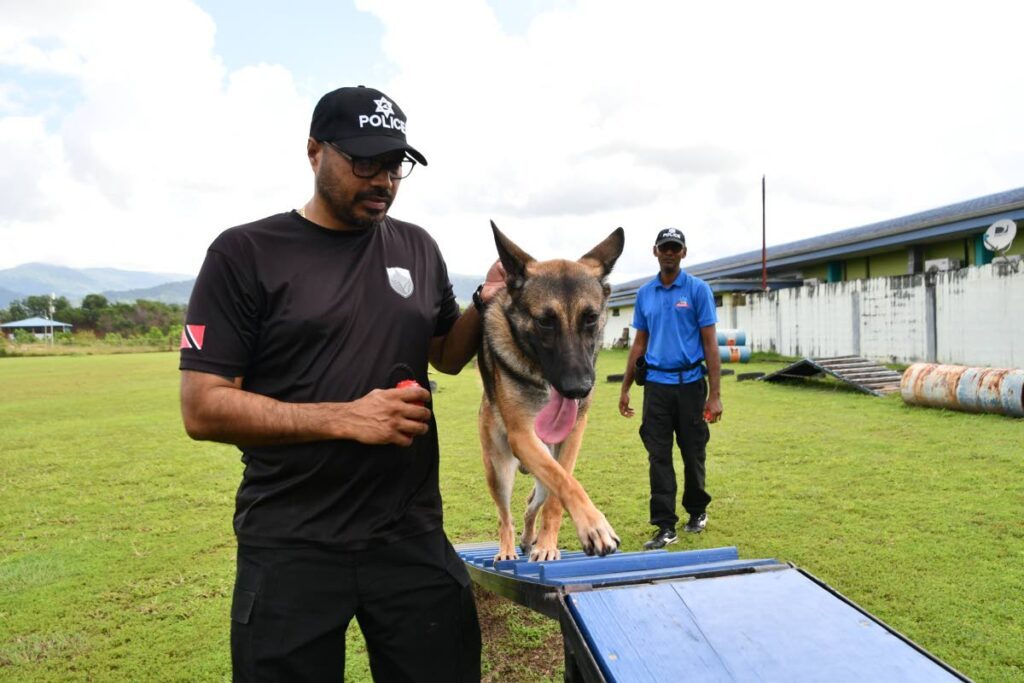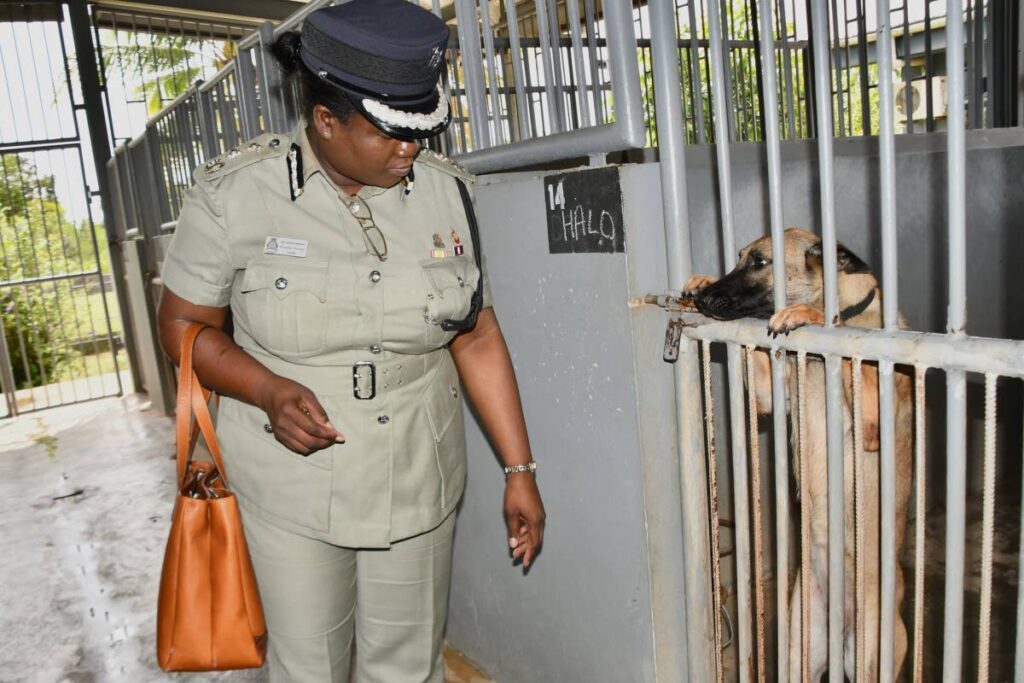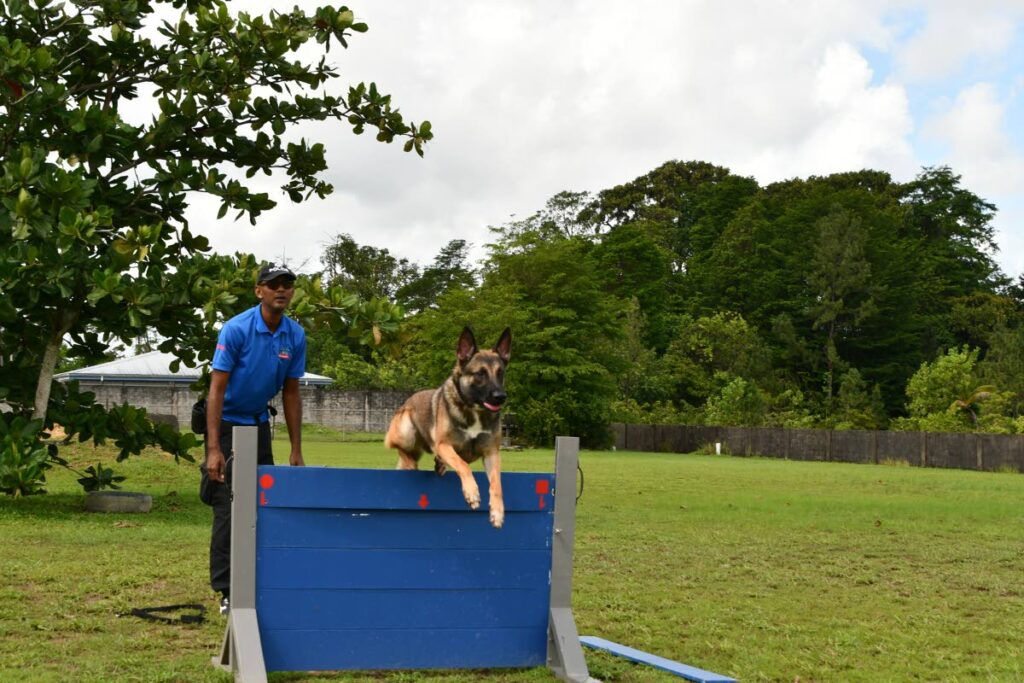Trinidad and Tobago's drug dogs trained to detect fentanyl

FENTANYL is now among the drugs that TT law enforcement dogs regularly search for, along with cocaine, marijuana and heroin.
Developed in 1959, Fentanyl was used by doctors in the 60s as an intravenous anaesthetic. They also use this opioid to treat patients with chronic severe pain or severe post-surgery pain.
It can be up to 100 times more potent than morphine and can only be used legally under the supervision of licensed medical professionals, who monitor patients for abuse and addiction. Opioids are highly addictive.
US musician Prince died in 2016 of an accidental overdose of fentanyl, which was also among the drugs that killed Tom Petty in 2017.
Here in Trinidad and Tobago (TT), Nicholas Elliot, who has been training government working dogs since September 2022, recently introduced fentanyl detection.

He said fentanyl puts drug problems on a whole new level: “A pencil-tip-worth of this drug can kill you.”
Two milligrammes of fentanyl can be lethal, depending on a person’s body size, tolerance and past usage.
Elliot runs awareness programmes on fentanyl for the dogs’ handlers. Neither the dogs nor the handlers come directly in contact with fentanyl, a dangerous synthetic drug.
“We use imported, specially designed tubes impregnated with the odour of laboratory-certified fentanyl,” said Elliot. “Trained dogs can sense fentanyl, but it does not have a detectable scent to humans.”
Overseas, fentanyl is pressed into pills that resemble legally prescribed painkillers.
Drug dealers also mix illegally manufactured fentanyl with other illicit drugs – heroin, methamphetamine and cocaine – to increase the potency of these drugs, which are sold as powders and nasal sprays.
An analysis of confiscated drugs by the US Drug Enforcement Administration (DEA) has found illegal drugs often contain 0.02 to 5.1 milligrams (more than twice the lethal dose) of fentanyl per tablet. The US reports that 42 per cent of illegal pills tested for fentanyl contained at least two milligrams of it – enough to cause death.
“We know from cases abroad that many unsuspecting people do not know the illegal drugs they are taking are laced with fentanyl,” said Elliot.
Illegal drug manufacturers typically distribute fentanyl by the kilogramme. One kilogramme has the potential to kill 500,000 people.
Fentanyl is dangerous even to touch, so canine officers are trained in what to do if they come into contact with the drug during a search. Naloxone (Narcan) is a nasal spray that works to reverse an opioid overdose. It blocks the effects of opiates on the brain and can restore breathing. In the US, first responders are routinely equipped with it.
“It buys you time to get to a medical practitioner,” said Elliot.

In training, officers wear double gloves and masks, even though they are only dealing with the fentanyl scent.
The US, through the Caribbean Basin Security Initiative, has been funding training for fentanyl detection through its embassies in TT, Georgetown, Guyana and Barbados.
Police dogs in TT have been working since the canine unit’s inception in 1952, but dedicated drug detection dogs didn’t arrive until Shep was imported from England in the early 70s. All of Shep’s arrests were for marijuana. Police dogs were subsequently trained to find cocaine and heroin.
Elliot said designer drugs like fentanyl are not an "upper-class" drug.
“There’s no such thing now as a drug confined to a certain socio-economic group.”
Fentanyl, he said, became popular after the US government cracked down on oxycodone, another highly addictive opioid.
"Then drug addicts turned to heroin. When Afghanistan put restrictions on growing poppies, and heroin became difficult to get, drug dealers looked for other alternatives. Fentanyl came in the picture. It can be produced in a 5,000-square-foot warehouse, as opposed to a field of 500 acres required to grow poppies for heroin. It came to the US in containers from Asia.”
According to the US Centers for Disease Control (CDC), synthetic opioids like fentanyl are the primary cause of overdose deaths. In 2022, the CDC reported more than 107,000 Americans died from drug overdoses, with 68 per cent of those deaths attributed to synthetic opioids, mostly fentanyl. From January 31, 2020-January 31, 2021, overdose deaths involving opioids rose by 38.1 per cent, and those involving synthetic opioids (mostly manufactured fentanyl) rose by 55.6 per cent.
Unless a drug is prescribed by a licensed medical professional and dispensed by a legitimate pharmacy, you can't know if it’s fake or legitimate, and without laboratory testing there’s no way to know if fentanyl is present with another illegal drug, or whether the amount present is lethal.
Fentanyl’s arrival in the Caribbean is just a matter of time.
“Designer drugs are here to stay,” said Elliot.

Comments
"Trinidad and Tobago’s drug dogs trained to detect fentanyl"